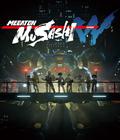Genre: Real-Time Strategy
Publisher: Sega
Developer: Petroglyph
Release Date: October 30, 2007
Futuristic real-time strategy titles have become quite the popular genre for PC gaming. Total Annihilation and Starcraft brought new levels of excitement to the RTS genre, as well as video games in general. Regardless of whether they involve exploring new planets, researching unbelievable technology or experiencing exciting high-tech battles, the popularity of futuristic RTS games is certainly growing with each generation, and it has become quite a profitable market. Petroglyph, part of the team who brought you Command & Conquer 3: Tiberium Wars and Star Wars: Galactic Battlegrounds, is bringing you Universe at War: Earth Assault — quite possibly another groundbreaking futuristic RTS title.
The "Universe at War" in question is our own; three different species are fighting each other for dominance of Earth. The beta in which I participated was only for the multiplayer portion, and while you can play as any of the three factions, you cannot play as the human race. Petroglyph has informed us that humans will be playable through different parts of the tutorial missions, but won't actually be a playable race in the campaign.
The first of these three factions is the Novus, who use high-tech machines and weaponry, as well as stealth-like tactics, to annihilate their enemies. Their infantry units are cheap to build but die very easily, with the exception of their hackers, who find ways to exploit enemy machinery in favor of the Novus. The Novus have three ground vehicles: Variants, Antimatter Tanks and Field Inverters. Variants are rather cheap and durable, Antimatter Tanks cause chain reaction explosions which deal incredible damage against vehicles and buildings and Field Inverters can create a bubble-like shield around itself and nearby units. Ranged ammunition has trouble getting through these bubbles, so taking out Field Inverters are vital to success.
The Novus also have two flying units, Corruptors and Dervish. Corruptors use lasers to deal damage to enemies but can also infect them with a virus. Units affected by the virus can later be exploited to the Novus' advantage. The Dervish are fast aerial damage dealers. The Novus use huge poles that attract energy from nearby energy points — sort of like power lines — to distribute energy across the map. When building structures, they must be within this "power zone." The Novus have the ability to phase out and teleport via these power lines throughout the map, which is pretty nifty during war.
The second of the three factions is the Hierarchy, my personal favorite. I could be mistaken, but the Hierarchy seem to be heavily influenced by the novel and film, "War of the Worlds," which isn't a bad thing. Rather than creating structures to house vast armies of infantry, vehicles and aerial units, the Hierarchy are built around one thing: Walkers — walking alien machines that are the size of warehouse buildings. The Hierarchy's builder units, Glyph Carvers, trace glyphs into the surface of the planet, which call down Walkers from the mother ship.
There are three different types of Walkers that can be called in, each with its own unique hard points, play styles and overall stats. Up to three Walkers can be on the battlefield at once, which may seem like a limited amount, but it's assuredly not, since they have massive amounts of health points, armor and damage output. Walkers can also be equipped with structures that can be used to recruit additional units, including: Grunts and Lost Ones, infantry units that deal damage up close; Monoliths, which act as scouting units; Saucers, which are great for defending against aerial units and repairing friendly units; and Phase Tanks, which deal massive plasma damage with their cannons and have the ability to phase in and out of visibility.
Walkers have customizable hard points located throughout their entire structure, which can be equipped with additional turrets to dish out more damage, additional armored plating or structures that will increase or decrease important stats, like gun range and build time. It'll take a huge army and amazing skill to take down a Walker, which gives them quite the epic feel. You must take out any armored plating, destroy each hard point surrounding the core and finally destroy the core. If you're playing against someone who is the Hierarchy, you can right-click and attack whichever hard point you wish to take out on the Walker, rather than attacking it as a whole.
The final faction is the Masari, which are based on light and darkness, so every unit has different features when enabled in either light or darkness mode. The building unit is the Architect, which focus and manipulate nearby energies to form structures on the planet. As a really cool addition to being a typical builder unit, Architects can be applied to existing structures to increase their overall efficiency and the amount of energy they receive. For example, placing an Architect on a barracks-like structure will decrease the time it takes for units within to be built.
The two infantry units for the Masari are Disciples and Seers. Disciples are your typical bread-and-butter infantry unit, while Seers have the ability to detect invisible units and, later down the tech tree, burn enemies alive simply by staring at them. The Masari vehicles are Sentries and Conquerors; the former are basically scouts, while the latter are long-range, heavy-damage dealing cannons. In light mode, Conquerors deal area of effect damage, and in dark mode, they have increased range. The Masari have three air units: Figments, which drop mines and are stealthy behind enemy lines; Inquisitors, which use pulse cannons to attack from the skies; and Skylords, which are basically flying artillery that can deal massive damage.
Each of the three factions in Universe at War: Earth Assault has three tech trees, each with four tiers of technology to research. In a game, you can only have up to six technologies researched at a time (out of a possible 12), but you have the ability to unlearn technologies in case you goof up or decide to change your strategy. Each of these technologies gives special bonuses to something relative to that tech tree. For example, as the Masari, your three tech trees are Light, Darkness and Balance. Researching the Light tree will increase stats and give you bonuses when your units are in light mode, while Darkness does the opposite. If you research Balance, however, you get overall perks and buffs to every unit, regardless of whether they're in light or darkness mode.
The three factions also come with a few super weapons, which require a fourth tier of technology, a good bit of resources to construct and a vast mount of time to prepare. One of the best super weapons belongs to the Novus: the ability to create a black hole. After building a certain structure and waiting several minutes, the Novus can call in these black holes on any visible area on the map. Over a short period of time, the black hole sucks in and destroys all nearby units, with the exception of Walkers. It does, however, deal damage to all of a Walker's hard points, which is very helpful when fighting them.
All of the factions have the ability to recruit three heroes. By default, the hero units cannot be respawned when they're killed. Some of the hero units have pretty interesting abilities. Kamal Re'x, a hero unit for the Hierarchy, sends psychic blasts toward his enemies and then harvests what's left for resources.
Aside from being different from every other faction, the three alien species have interesting ways of collecting resources. The Novus use constructor ships to fly over human buildings and life forms to slowly accumulate resources and bring them back to their base. The Masari use structures to accumulate energies surrounding them to use as resources. The Hierarchy call in Drone Reavers, which then use plasma lasers to harvest and beam resources to the mother ship. It's quite entertaining to have multiple Drone Reavers harvesting a nearby building, when suddenly a human runs out and screams, "We're all gonna die!" The Drone Reaver is more than happy to oblige and zaps the human with a plasma laser; he disappears, and there's a hefty increase in my accumulated resources. At least we humans are good for something!
The multiplayer beta included two maps, each 1vs1 and large enough to expand your base as much as possible while still having to travel across the landscape to find your enemy. Another interesting multiplayer feature is medals, which are unlocked via certain achievements during online play. These medals, when equipped (up to three at a time), may increase your resource harvesting yield, increase a certain unit type's damage or reduce the cool-down time of a super weapon. Earning and managing these medals seem to be a vital element of success in multiplayer gameplay.
With three excitingly diverse factions, amazing gameplay, exciting sound effects and visual destruction on a whole new level, Universe at War: Earth Assault looks to be a definite eye-catcher for any RTS fan. The beta didn't include any single-player whatsoever, but based on the three available factions and multiplayer gameplay experience, this will be one hell of a game.
More articles about Universe at War: Earth Assault











 Universe at War: Earth Assault is set in the near-future when multiple factions from across the galaxy have come to Earth to wage epic warfare. Containing numerous features and customization options never-before-seen in the RTS genre, Universe at War: Earth Assault will create an exceptional strategy experience for single-player and especially multiplayer battles.
Universe at War: Earth Assault is set in the near-future when multiple factions from across the galaxy have come to Earth to wage epic warfare. Containing numerous features and customization options never-before-seen in the RTS genre, Universe at War: Earth Assault will create an exceptional strategy experience for single-player and especially multiplayer battles.




































